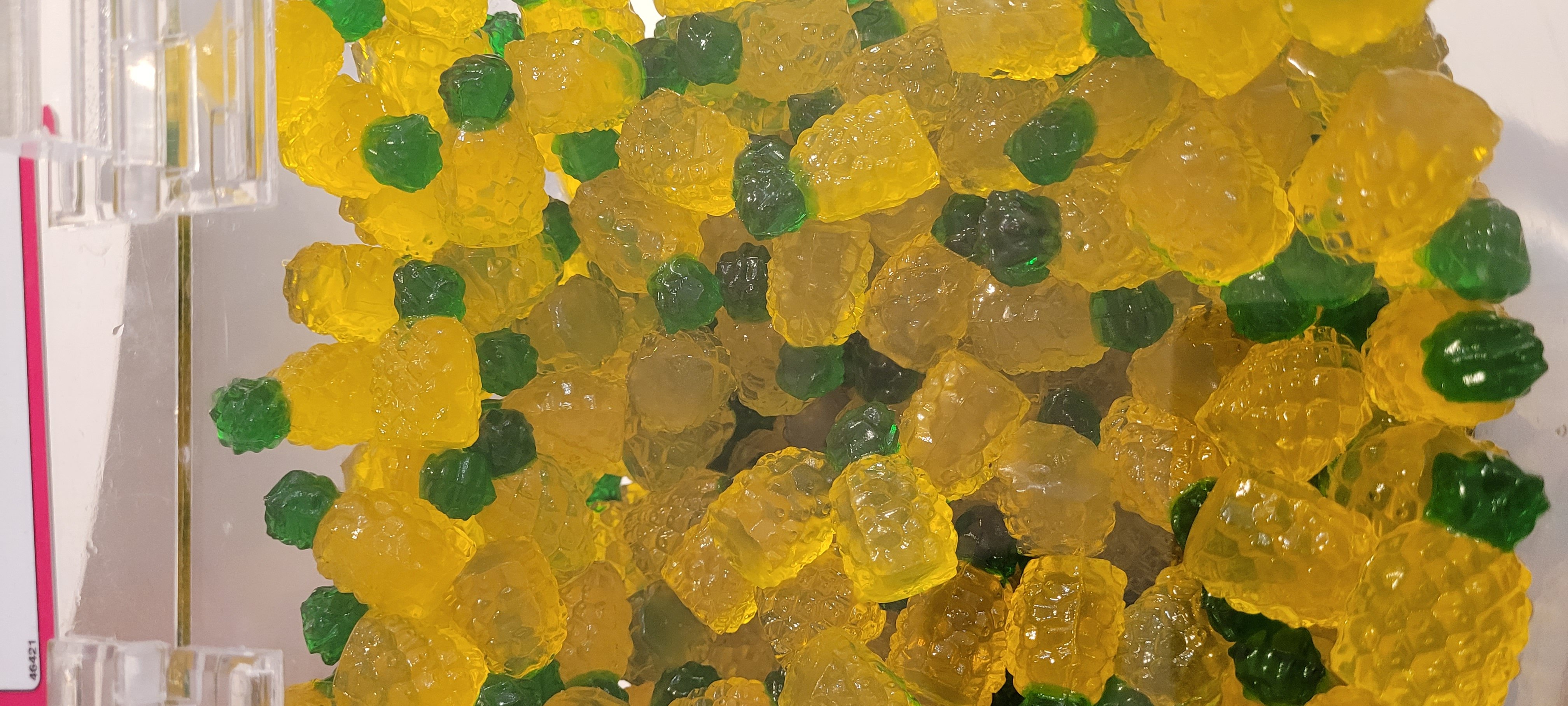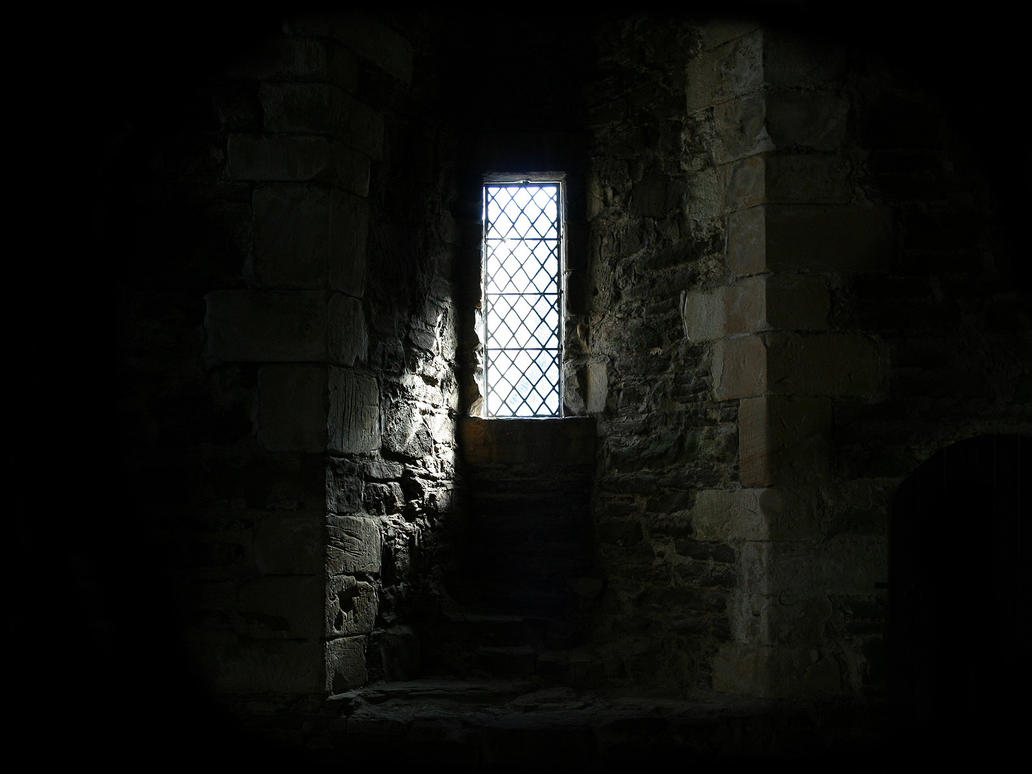Great, can’t wait to afford it in 60 years.
Do people actually use such massive hard drives? I still have my 1 TB HDD in my PC (and a 512 GB SSD), lol.
This is an enterprise drive, so it’s useful for any usecase where a business needs to store a lot of lightly used data, like historical records that might be accessed infrequently for reporting and therefore shouldn’t get be transfered to cold storage.
For a real world example, the business I’m currently contracting at is legally required to retain safety documentation for every machine in every plant they work in. Since the company does contract work in other people’s plants that’s hundreds of PDFs (many of which are 50+ page scans of paper forms) per plant and hundreds of plants. It all adds up very quickly. We also have a daily log processes where our field workers will log with photographs all of their work every single workday for the customer. Some of these logs contain hundreds of photographs depending on the customer’s requirements. These logs are generated every day at every plant so again it adds up to a lot of data being created each month
Data hoarders could be happy, but otherwise it’s mostly enterprise use.
Still, I personally hold about 4 TB of files, and I know people holding over 30 TB.
As soon as your storage needs exceed 1-2 games and a bunch of old photos, demand for space raises quickly.
I have just shy of 8TB of data on my home file server.
That’s not including my NVR (for security cameras) which has a single 6TB SATA drive sitting around 40% capacity.
I have 50t of data total : archival, old project, backups, backups of my physical medias, etc
Pretty sure I had a bigger hard drive than that for my Amiga. You could have broken a toe if you’d dropped it.
Imagine having that…then dropping it…
Summon Linus
It will take about 36 hours to fill this drive at 270mb/s
That’s a long time to backup your giraffe porn collection.
How you 'bout to call me out like that ?
How did you know about my giraffe porn?
What kind of degenerate do you think I am? That’s 36 hours to back up my walrus porn collection.

…or at least call a rubber walrus protector salesman!
Woah I haven’t thought about that since high school. I vaguely remember an inside joke between some dope smoking buddies and i where we would say call the police in that nervous voice
You need a week to fill the hecking disk. flips server rack up in disappointment
But this would be great for tape-like storage where you only need to write once and maybe query little individual bits of it. Slap RAID on top of it and you’ve got yourself your own nation state intelligence service datastore.
What is the usecase for drives that large?
I ‘only’ have 12Tb drives and yet my zfs-pool already needs ~two weeks to scrub it all. With something like this it would literally not be done before the next scheduled scrub.
What drives do you have exactly? I have 7x6TB WD Red Pro drives in raidz2 and I can do a scrub less than 24 hours.
I have 2*12TB whitelabel WD drives (harvested from external drives but Datacenter drives accourding to the SN) and one 16 TB Toshiba white-label (purchased directly also meant for datacenters) in a raidz1.
How full is your pool? I have about 2/3rds full which impacts scrubbing I think. I also frequently access the pool which delays scrubbing.
It’s like 90% full, scrubbing my pool is always super fast.
Two weeks to scrub the pool sounds like something is wrong tbh.
It’s like the petronas towers, everytime they’re finished cleaning the windows they have to start again
There is an enterprise storage shelf (aka a bunch of drives that hooks up to a server) made by Dell which is 1.2 PB (yes petabytes). So there is a use, but it’s not for consumers.
That’s a use-case for a fuckton of total capacity, but not necessarily a fuckton of per-drive capacity. I think what the grandparent comment is really trying to say is that the capacity has so vastly outstripped mechanical-disk data transfer speed that it’s hard to actually make use of it all.
For example, let’s say you have these running in a RAID 5 array, and one of the drives fails and you have to swap it out. At 190MB/s max sustained transfer rate (figure for a 28TB Seagate Exos; I assume this new one is similar), you’re talking about over two days just to copy over the parity information and get the array out of degraded mode! At some point these big drives stop being suitable for that use-case just because the vulnerability window is so large that the risk of a second drive failure causing data loss is too great.
Thats exactly what I wanted to say, yes :D.
I get it. But the moment we invoke RAID, or ZFS, we are outside what standard consumers will ever interact with, and therefore into business use cases. Remember, even simple homelab use cases involving docker are well past what the bulk of the world understands.
I would think most standard consumers are not using HDDs at all.
What’s scrubbing for?
A ZFS Scrub validates all the data in a pool and corrects any errors.
I’m not in the know of having your own personal data centers so I have no idea. … But how often is this necessary? Does accessing your own data on your hard drive require a scrub? I just have a 2tb on my home pc. Is the equivalent of a scrub like a disk clean up?
You usually scrub you pool about once a month, but there are no hard rules on that. The main problem with scrubbing is, that it puts a heavy load on the pool, slowing it down.
Accessing the data does not need a scrub, it is only a routine maintenance task. A scrub is not like a disk cleanup. With a disk cleanup you remove unneeded files and caches, maybe de-fragment as well. A scrub on the other hand validates that the data you stored on the pool is still the same as before. This is primarily to protect from things like bit rot.
There are many ways a drive can degrade. Sectors can become unreadable, random bits can flip, a write can be interrupted by a power outage, etc. Normal file systems like NTFS or ext4 can only handle this in limited ways. Mostly by deleting the corrupted data.
ZFS on the other hand is built using redundant storage. Storing the data spread over multiple drives in a special way allowing it to recover most corruption and even survive the complete failure of a disk. This comes at the cost of losing some capacity however.
Thank you for all this information. One day when my ADHD forces me into a making myself a home server I’ll remember this and keep it in mind. I’ve always wanted to store movies but these days just family pictures and stuff. Definitely don’t have terabytes but I’m getting up 100s of gb.
Sounds like something is wrong with your setup. I have 20TB drives (x8, raid 6, 70+TB in use) … scrubbing takes less than 3 days.
Jesus, my pool takes a little over a day, but I’ve only got around 100 gb how big is your pool?
The pool is about 20 usable TB.
Something is very wrong if it’s taking 2 weeks to scrub that.
High capacity storage pools for enterprises.
Space is at a premium. Saving space should/could equal to better pricing/availability.Not necessarily.
The trouble with spinning platters this big is that if a drive fails, it will take a long time to rebuild the array after shoving a new one in there. Sysadmins will be nervous about another failure taking out the whole array until that process is complete, and that can take days. There was some debate a while back on if the industry even wanted spinning platters >20TB. Some are willing to give up density if it means less worry.
I guess Seagate decided to go ahead, anyway, but the industry may be reluctant to buy this.
I would assume with arrays they will use a different way to calculate parity or have higher redundancy to compensate the risk.
If there’s higher redundancy, then they are already giving up on density.
We’ve pretty much covered the likely ways to calculate parity.
It’s to play Ark: Survival Evolved.
Data centers???
there was a time i asked this question about 500 megabytes
I too, am old.
I’m older than that but didn’t want to self report. the first hard disk i remember my father buying was 40mb.
I remember renting a game, and it was on a high density 5.25" inch floppy at a whopping 1.2MB; but or family computer only had a standard density 5.25".
So we went to the neighbors house, who was one of the first computer nerds (I’m not sure he’s still alive now), who copied the game to a 3.5" high density 1.44MB disk, then we returned the rental because we couldn’t play it on the 1.2 MB HD 5.25" floppy.
… And that was the first time I was party to piracy.
I am not questioning the need for more storage but the need dor more storage without increased speeds.
I worked on a terrain render of the entire planet. We were filling three 2 Tb drives a day for a month. So this would have been handy.
I wanna fuck this HDD. To have that much storage on one drive when I currently have ~30TB shared between 20 drives makes me very erect.
nephew
twenty!?
Yeah, lots of drives of varrying capacity.
Average Lemmy user
Ain’t nothing about me is average except for the size of my cock.
Your array sounds pretty average to be fair
Well, largest this week. And
Yeah, $800 isn’t a small chunk of change, but for a hard drive of this capacity, it’s monumentally cheap.
Nah, a 24TB is $300 and some 20TB’s are even lower $ per TB.
I paid $600+ for a 24 TB drive, tax free. I feel robbed. Although I’m glad not to shop at Newegg.
Yes, fuck Newegg (and amazon too). I’ve been using B&H for disks and I have no complaints about them. They have the Seagate Ironwolf Pro 24TB at $479 currently, but last week it was on sale for $419. (I only look at 5yr warranty disks.)
I was not in a position to take advantage as I’ve already made my disk purchase this go around, so I’ll wait for the next deep discount to hit if it is timely.
I hate amazon but haven’t been following stuff about newegg and have been buying from them now and then. No probs so far but yeah, B&H is also good. Also centralcomputer.com if you are in the SF bay area. Actual stores.
Newegg was the nerd’s paradise 10+ years ago. I would spend thousands each year on my homelab back then. They had great customer service and bent over backwards for them. Then they got bought out and squeezed and passed that squeeze right down to the customers. Accusing customers of damaging parts, etc. Lots of slimeball stuff. They also wanted to be like amazon, so they started selling beads, blenders and other assorted garbage alongside tech gear.
After a couple of minor incidents with them I saw the writing on the wall and went to amazon who were somewhat okay then. Once amazon started getting bad, I turned to B&H and fleaBay. I don’t buy as much electronic stuff as I used to, but when I do these two are working…so far.
What is B&H?
I’ve recently bought a series of 24TB drives from both Amazon and Newegg. Each one I got was either DOA or shortly thereafter. I just gave up but I would love to have a better source.
https://www.bhphotovideo.com/c/product/1809439-REG/seagate_st24000nt002_ironwolf_pro_22tb_3_5.html
They are a retailer in NYC. Their specialties (historically) lie in photography and all the tech surrounding that.
Christ, remember when NewEgg was an actual store? Now they’re just a listing service for the scum-level of retailer and drop shippers. What a shame.
Depends on your use case. The linked drive according to seagate’s spec sheet is only rated for about ~6.5 power-on hours per day(2400 per year). So if just in your desktop for storage then sure. In an always (or mostly) on NAS then I’d find a different drive. It’ll work fine but expect higher failure rates for that use.
I got some 16TB drives recently for around $200 each, though they were refurbished. Usually a refurbished drive will save you 20-40%. Shipping can be a fortune though.
Refurbished drives sound scary. Any data to point towards that not being a problem?
As mentioned by another user, all drives fail, it’s a matter of when, not if. Which is why you should always use RAID arrangement with at least one redundant drive and/or have full backups.
Ultimately, it’s a money game. If you save 30% on a recertified drive and it has 20% less total life than a new one, you’re winning.
Here’s where I got some.
https://serverpartdeals.com/collections/manufacturer-recertified-drives
I looked around a bit, and either search engines suck nowadays (possibly true regardless) or there are no independent studies comparing certified and new drives.
All you get mostly opinion pieces or promises by resellers that actually, their products are good. Clearly no conflict of interest there. /s
The best I could find was this, but that’s not amazing either.
What I do is look at backblaze’s drive stats for their new drives, find a model that has a good amount of data and low failure rate, then get a recertified one and hope their recertification process is good and I don’t get a lemon.
I would absolutely not use refurbs personally. As part of the refurb process they wipe the SMART data which means you have zero power-on hours listed, zero errors, rewrite-count, etc - absolutely no idea what their previous life was.
If you’ve got a RAID array with 1 or 2 parity then manufacturer recertified drives are fine; those are typically drives that just aged out before being deployed, or were traded in when a large array upgraded.
If you’re really paranoid you should be mixing mfg dates anyway, so keep some factory new and then add the recerts so the drive pools have a healthy split.
Yep staggering manufacturing dates is a good suggestion. I do it but it does make purchasing during sales periods to get good prices harder. Better than losing multiple drives at once, but RAID needs a backup anyway and nobody should skip that step.
I mean a backup of a RAID pool is likely just another RAID pool (ideally off-site) – maybe a tape library if you’ve got considerable cash.
Point is that mfg refurbs are basically fine, just be responsible, if your backup pool runs infrequently then that’s a good candidate for more white label drives.
Thanks! It seems too risky for something like a hard drive.
Omg I really have been out of the loop. I originally filled my 8 bay NAS with 6tb drives starting back in 2018. Once they would fill, i added another. 3 years ago, I finally ran out of space and started swapping out the 6tb for 10tb. Due to how it works, I needed to do 2 before I saw any additional space. I think i have 3 or 4 now, and the last one was 2 years ago. They did cost around $250 at the time, and I think i got 1 for just over $200. The fact that I can more than double that for only $300 is crazy news to me. Guess I am going to stop buying 10tb now. The only part that sucks is having to get 2 up front…
I bought 8TB for something like $300. 36TB seems quite attractive.
my qbittorrent is gonna love that
That’s a lot of porn.
You wouldn’t download your mom.
No, but I have downloaded yours.
bstix’s mom, has got it going on.
I have seeded your mom.
And linux distros
I have around 150 distros seeding 🤣. I need to get those numbers up!
Just say it’s full of porn, it’s easier to explain
Always a keep an nsfw tab open to swap to so your family doesnt see you on the arch linux wiki.
Depends on the audience tbh
Werd
Honestly, when I first got into forums, I thought they were literally talking about Linux distros, because at the time, that’s literally all I was seeding since that’s what I was into.
You’d go broke. Of course it’s all Linux, family archives and DNA test data, BTC blockchain, backed up FOSS projects, archives of Wikipedia, Project Gutenberg and OpenStreetMap, and of course - POVRay renders.
finally i’ll be able to self-host one piece streaming
Can’t wait to see this bad boy on serverpartdeals in a couple years if I’m still alive
if I’m still alive
That goes without saying, unless you anticipate something.
SSD ≠ HDD
Never change pedantic Internet, never change!
Seagate so how long before it fails?
It comes with three monkeys inside for redundancy:

At least it’s not a WD POS
In my experience, not all Seagates will fail but most HDD’s that fail will be Seagates.
Because Seagate sell the most drives and all drives fail?
The thing is I’m a data hoarder who buys lots of HDD’s; both new and used. I have only bought a few Seagates. It’s always the Seagates that are fucked. I had a Toshiba and Western Digital fail on me but I have had 5 Seagates fail on me. Could be a coincidence, sure but the brand I have bought the fewest of had the most failures. I recognize this is not scientific in any way. I recently bought a brand new 8TB Seagate Barracuda and its still going strong. I hope if lasts a good while. My oldest drive is a 1TB Hitachi (RIP) from 2008. I can’t wait for 8TB SSD’s to become cheaper.
Nah, as a fellow data hoarder you’re 100% correct. I have a couple of dozen disks, I’ve had failures from both Seagate and WD, but the Seagates have failed much more often. For the past couple of years, I’ve only purchased WD for this reason.
I mostly buy new Toshiba drives now. The WD blue drives are fine. I have a few of them. I have a WD red that is reporting surface errors, it’s still going and the number of errors hasn’t increased so I’m not stressing replacing it. Also, btrfs gives me peace of mind because I can periodiclly check if my filesystem has corrupted data.
Any hint about the ironwolfs?
I’ve had my 16TB ironwolf pros spinning for 5 years in my NAS, no issues. People love to trash Seagate but I can’t say I’ve had any issues. I also have 6x10TB barracuda pros and they’re fine too, for about 10 years.
About 3 hours.


















